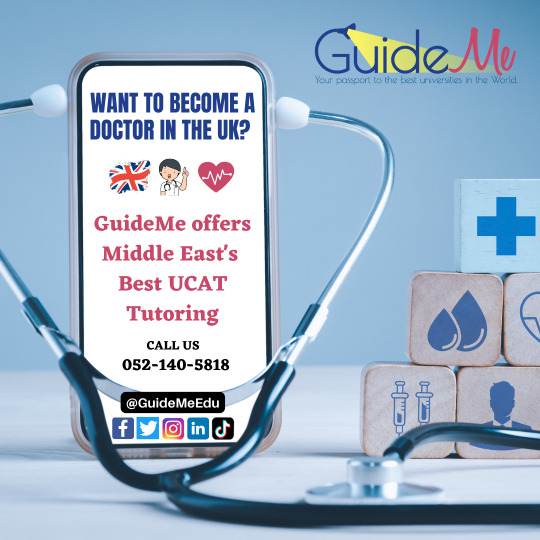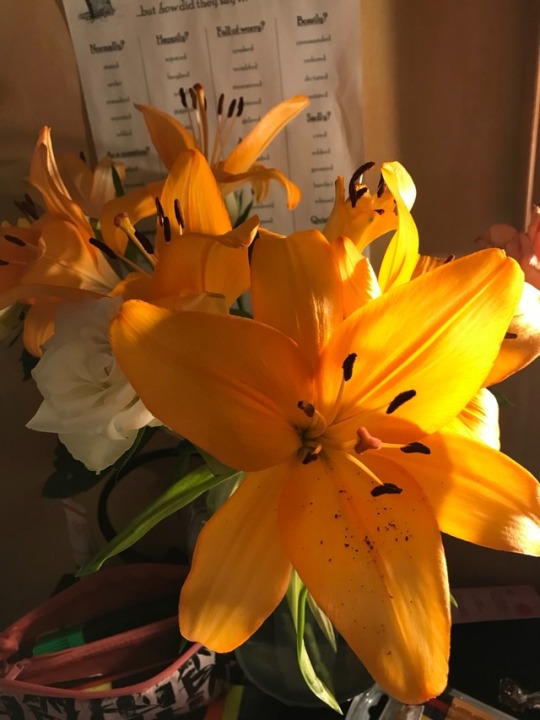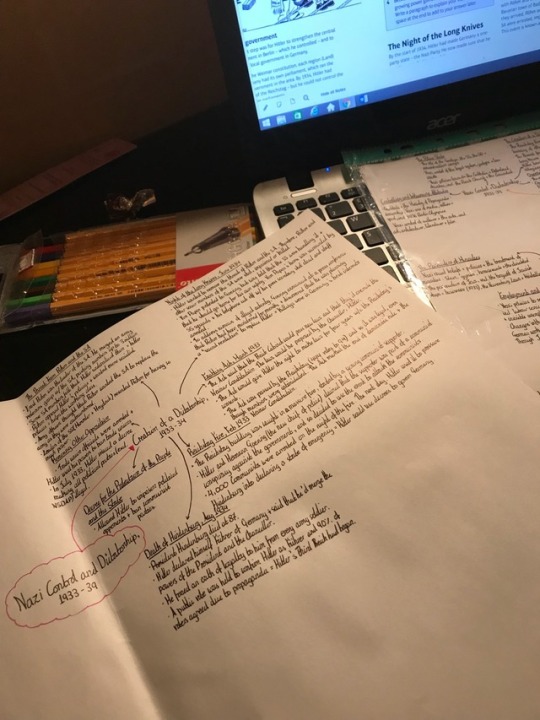#aspiringmedic
Photo

Get Admitted to the Top Medical Schools in the UK with GuideMe’s UCAT sessions 👨🏻⚕️👩🏼⚕️
We help change your Medical Dreams into Reality 🎯💪🏻
https://www.guidemeedu.com/ucat-testprep
#ucat #ucatprep #ucatexam #studyintheuk #studyinuk #studyinukraine #studyinuk🇬🇧 #studyinireland #medicalschoollife #medicalstudent #medicalschool #personalstatement #workexperience #ucas #ucat #bmat #alevel #alevels #alevelbiology #alevelchemistry #studymotivation #gamsat #dentistry #medicine #aspiringmedic #dubai #uae #ksa #bahrain #kuwait
1 note
·
View note
Photo

The father of modern medicine. I remember learning about Hippocrates in GCSE history for the “medicine thought time thing” I think I loved medicine then and it just took me a long time to get to this point where I decided to go for it instead of just saying “it’ll never happen”. Anyway lately I’ve seen things on social media that have really enforced that desire to study medicine and I feel like now that I’ve started I won’t stop till I’ve got it lol! Anyway only about roughly 2 weeks till GAMSAT results how are you all feeling as results day looms closer? #gamsat #premed #graduateentrymedicine #medschoolhopeful #aspiringmedstudent #aspiringdoctor #aspiringmedic #medicine https://www.instagram.com/p/Bw-gqpgBHpA/?utm_source=ig_tumblr_share&igshid=pvtm1v3pjhzj
#gamsat#premed#graduateentrymedicine#medschoolhopeful#aspiringmedstudent#aspiringdoctor#aspiringmedic#medicine
1 note
·
View note
Text
My Journey: where am I now?

Over the past year, I have very much neglected to post anything on this blog. For that, I am sorry. Sorry to myself and anyone who actually enjoys reading what I post. I really lost myself in the whirlwind that was A Level preparation and my final year of compulsory education. Unfortunately, despite this, results day did not go as I had expected and I was disappointed with my results. I ended up having to go through clearing, to get a place at university. Initially, my plan was to take a gap year and re-apply to study medicine, but in light of my results, I have decided to go to Newcastle University and study an undergraduate Biomedical Sciences degree to give me some background knowledge, before actually starting my degree in Medicine. This is an opportunity I am immensely grateful for. I believe that everything happens for a reason and after going to visit Newcastle University, I fell completely in love with both the city and the university. It combines beautiful, picturesque, old buildings with modern day architecture providing a perfect amalgamation of the two. I would very much recommend the university to anyone considering it. Not only is it pretty, it is a Russell Group university with very reputable academics teaching in their fields, the people there are very friendly and there are lots of facilities available also.
I believe that this experience will help build my character and indirectly contribute to me becoming a better doctor. I hope it will allow me to develop more resilience which is necessary in lots of different aspects of a practicing doctor’s life, from dealing with rejection, to dealing with the death of patients. Many people get to medical school before they face any challenges academically, the fact I will have learnt how to deal with this before medical school, will prove useful. I take this opportunity to encourage anyone struggling at any stage of their journey to becoming a doctor. Anything is possible if you put your mind to it. Whilst it is very easy to get lost in going through the motions of just doing work because you have to, it is important to remember why you are doing it, what you wish to get out of it and above all make sure you enjoy every moment of it. Do not give up. Also, do not lose yourself, try and distinguish between what makes you “you”, apart from your academic or professional achievements. I’d like to believe that being a doctor will become my profession which I will enjoy with all of my heart, but I am more than my degree, more than my profession, more than my grades, and more than my achievements. I am unique, I have other traits, talents and gifts that make me who I am, everything else is just a bonus.
For me, I believe the process of becoming a doctor and the growth it ensues, is almost as important as reaching the end goal itself. Rather than the years to becoming a consultant seeming long and arduous (as it may seem, to many). I see it as time for me to grow and develop, mentally, academically, and personally into the best doctor I can be. I am very much looking forward to my time at Newcastle, and will endeavor to post regularly during my time there.
#onestepcloser#medicine#doctor#biomed#newcastle#dontgiveup#growth#whatsnext#believe#aspiringmedic#newcastleuniversity
1 note
·
View note
Photo


history revision ft. some beautiful flowers 💐 I have my mocks next week and I cannot be bothered but A DOCTOR IS WHAT I WANT TO BE AND A DOCTOR IS WHAT I WILL BE!
8 notes
·
View notes
Text
Art and Medicine
An Essay on the links between art and medicine
Art is the expression or application of human creative skill and imagination, typically in a visual form such as painting or sculpture, producing works to be appreciated primarily for their beauty or emotional power.[1]The main feature is that it requires creativity and lateral thinking which provides people with different viewpoints and perspectives of particular situations and is very useful for effective problem solving. Medicine is the science or practice of the diagnosis, treatment, and prevention of disease.[2] Its regard as a science means that it is the intellectual and practical activity encompassing the systematic study of the structure and behaviour of the physical world through observation and experiment.[3] At first glance, these two terms appear to be antonyms of one another. One which is expressive and the other which is regimented, however throughout this essay I explore how this is in fact not the case and how the study and practice of medicine relies on art.
An in-depth understanding of the human anatomy, is an area of knowledge required by all doctors. It enables them to link patient symptoms to possible diagnoses effectively. Anatomical drawings provide a visual representation of the aspects of the human body and help people understand it. Historically, medicine and art have been successfully intertwined, the development of medicine has also been dependent on art. Medical illustration for instruction first appeared in Hellenic Alexandria during the early 3rd century B.C. covering anatomy, surgery, obstetrics and plants that had medical properties. [4] Initially, anatomy was linked closely with science, culture and art, many of the anatomic drawings were amalgamations of these themes with the aim of simultaneously educating and entertaining the viewers. Some of which depicted cadavers as very much alive, full of character and eccentricity or contrastingly, dead. An example of this is pictured below.

This drawing [5] shows the subject as a young man emerging from the bushes on a hill. This background helps to add a feeling of anticipation and a sense of an important revelation being expressed. This could also be used to express the fact that the knowledge of the intricate structures that make up the human body were only just being discovered at the time that this drawing was created.
The artist depicts the male subject’s outer bodily features in a very realist style which enables the viewer to be able to relate to the subject and clearly identify it as a human being. It also influences the viewers’ perception of the organs being exposed in this piece.
On one hand the organs being shown seem real and believable as they are part of what seems to be a very real human being, expressing emotions not dissimilar to those that the viewer experiences on a daily basis. The way that the subject averts his eyes from the gaze of the viewer and uses his skin to cover his torso, expresses a sense of shyness and timidity that many people would have experienced as well as showing a sense of modesty.
On the other hand, the organs being shown seem unbelievable and magical. This is because the use of surrealism is a prominent component of this piece. One is not able to lift up their skin and reveal their organs as depicted here which makes the organs being revealed seem fake and unreal to some extent. Deeper analysis shows that the subject is positioning his hands as a magician does, adding an awe-inspiring, magical, implausible dimension to this drawing.
Whatever the interpretation, this drawing links the educational and artistic properties of anatomy, seamlessly, leaving the viewer to make their own conclusions as to what is real and what is not.
Specific aspects of practicing medicine can be described as art. An example of this is surgery which is defined as ‘the treatment of injuries or disorders of the body by incision or manipulation, especially with instruments’. [6] During the process leading up to surgery, often many imaging techniques are used to provide the surgeon and their team with an understanding of the condition they are dealing with, the pathology and how to go about rectifying the situation. These images themselves can be seen as art, they are visual representations of the body that tell a story, some of which make use of the different densities of aspects of the human body to create a detailed picture. Together they can be seen as art as each imaging technique enables to see the body slightly differently, examples of this include ultrasounds, which only show soft tissue and MRI scans which show a cross-section of the body part being scanned.
The invasive aspect of performing a surgery is also very artistic. A subtle example of this is that surgeons create incisions in the body enabling them to retract the skin, exposing organs of different shapes, sizes textures and densities. Upon revealing the aspect of the body concerned, the surgeon must inspect it and uses different tools to operate on the patient, cutting, stitching and removing parts of organs or blood vessels for example. The intricate workings of the body are being altered here improving bodily function in many people and leaving a lasting impression on the recipient. The need for a delicate hand, manual dexterity, a sense of purpose and an understanding of the medium that is the human body, is not dissimilar to an artist molding his structure or drawing his subject in a medium of paint or pencil. A more obvious example lies within the subspecialty of Plastic Surgery. This variation of surgery is most concerned with the outward appearance of different parts of the human body examples of such surgeries include rhinoplasties (nose jobs) and breast reconstructions from cancer. These require very intricate stitching to produce minimal scarring and the reshaping of parts of the body to look more aesthetically pleasing and more natural.
For surgeons, some of the most artistic procedures are found in microsurgical techniques where tissue is transferred from one part of the body to another based on establishing a new blood supply. This allows the surgeon to re-establish tissue in another location that can be rebuilt into something else. Here, the lines marking the division of medicine as art or science are increasingly blurred. Such procedures not only require extensive scientific understanding of anatomy and blood supply, but also are dependent on the surgeon being able to reshape one kind of bone into another. In the example of a tumour being removed from the mouth, a leg bone can be transplanted and carved into a mandible, for which an artistic perspective is paramount.
If doctors are criticized, it is often not for their lack of knowledge, but for a lack of insensitivity and for ignoring or being oblivious to the emotional distress affecting their patients. Mahajan (2006) warns doctors against allowing the science behind medicine to inhibit their humanity and sense of empathy. If medicine is viewed purely as a science, then the importance of successful patient-doctor communication and interaction is ignored. A knowledge of and ability to engage with fine art in particular, being able to deduce possible interpretations of artwork and be aware of the underlying emotional connotations being emphasised in the piece can help within the practice of medicine. This is because it makes a person more receptive to the people and emotions present around them, makes them more likely to notice intricate details regarding a person’s physical, mental and emotional state which can be crucial in correctly diagnosing a patient and providing the most suitable treatment overall for that patient. Also, the ability to analyse artwork can prove to be a great skill for doctors. This is because in the analysis of other subjects such as chemistry, the conclusions drawn are mostly based on fact that has been proven or a theory that is being developed, whereas art analysis draws on instinct, emotional response and the perception of a piece. Being able to look beyond the facts and particular list of symptoms to match a diagnosis with a patient can create a much needed patient-centered approach to medical dilemmas, focusing on the patient as a whole, seeing the bigger picture and then matching the patient with the diagnosis rather than the other way around. [7]
Though medicine relies on it, art can be its own form of psychotherapy involving the encouragement of free self-expression through painting, drawing, or modelling, used as a remedial or diagnostic activity.[8] The goal of this is to improve people’s mental health, specifically by reducing anxiety, helping to manage behaviour and addictions, allowing the client to explore their feelings and resolve emotional turmoil. Art therapists use their understanding of visual art in conjunction with counseling theories and techniques. It is widely practiced in hospitals, psychiatric and rehabilitation facilities, schools and other clinical and community settings and it is a prime example of how art can not only link with medicine but enhance it. [9]
TO
Sources
1. https://www.google.co.uk/?gws_rd=ssl#q=art+define
2. https://www.google.co.uk/?gws_rd=ssl#q=define+medicine
3. https://www.google.co.uk/?gws_rd=ssl#q=science+define
4. History, Present and Future of Medical Art
http://www.vesaliusfabrica.com/en/related-reading/karger-gazette/medical-art-through-history.html
5. National Library of Medicine
Tabulae Anatomicae: Venice, 1627.
6. https://www.google.co.uk/?gws_rd=ssl#q=define+surgery
7. Lisa Sanders: Every Patient Tells a Story: Medical Mysteries and the Art of Diagnosis (2009)
8. https://www.google.co.uk/?gws_rd=ssl#q=define+art+therapy
9. http://www.apexart.org/exhibitions/berlet.htm
3 notes
·
View notes
Text
Diagnosis: "Every Patient Tells a Story"
By Lisa Sanders Reading the book "Every Patient Tells a Story" has given me some insight into diagnosis, a crucial aspect of working as a doctor. Doctors may need to seek the expertise of more experienced practitioners and those in different medical fields, on their 'quest' to reveal a patient's diagnosis. This highlights the necessity of teamwork and effective communication.Different doctors, through different experiences, previous patients or wider reading, may be more able to identify different medical conditions. Nobody can know it all. Asking for advice from collegues helps doctors make sense of patient's conditions using a technique of differential diagnosis. Differential diagnosis is a term I have heard being used a lot, but previously I had not understood its gravity. It is defined as the process of distinguishing between diseases that present similar clinical features. It involves the application of huge volumes of knowledge and understanding of medical concepts. The thought processes required to eliminate possible diagnoses from the list, that don't 'fit' with the patient's symptoms, coupled with the ability to hone in on key, case-specific details is intense. This is why it is so important for doctors to understand the links between traditional topics taught at medical school, such as pathology, physiology, anatomy and biochemistry and the diagnosis of the conditions they encounter. The study of medicine requires a commitment to "life-long learning". This book specifically highlights the problems regsrding the use of the physical exam to help diagnose patients. Some doctors feel more inclined to rely on the analysis of laboratory testing, than to use physical examination to arrive at a conclusion. It is said that the skills of doctors in completing the exam do not improve between being an foundation years and registrar years. There is a lack of growth and development in this area. The opportunity to attend workshops on how to effectively conduct physical exams, could improve performance in this area, rather than one simply being left alone to complete it. One of the most thrilling aspects of this book are the anecdotes. They all contain descriptions of real situations and patients and the stories surrounding their difficult diagnoses. It has informed me of intreguing conditions such as canaboid hypermesis and pernicious anemia and sparked my interest in similar conditions and the potential difficulties surrounding their diagnosis. Although I do believe that the author has slightly exaggerated the difficulty of diagnosis and some stories seem slightly stereotyped, the book is very well-written and informative. It provides the reader with great understanding of how doctors arrive at accurate diagnoses and lots of annecdotes to keep the reader engaged. TO
0 notes